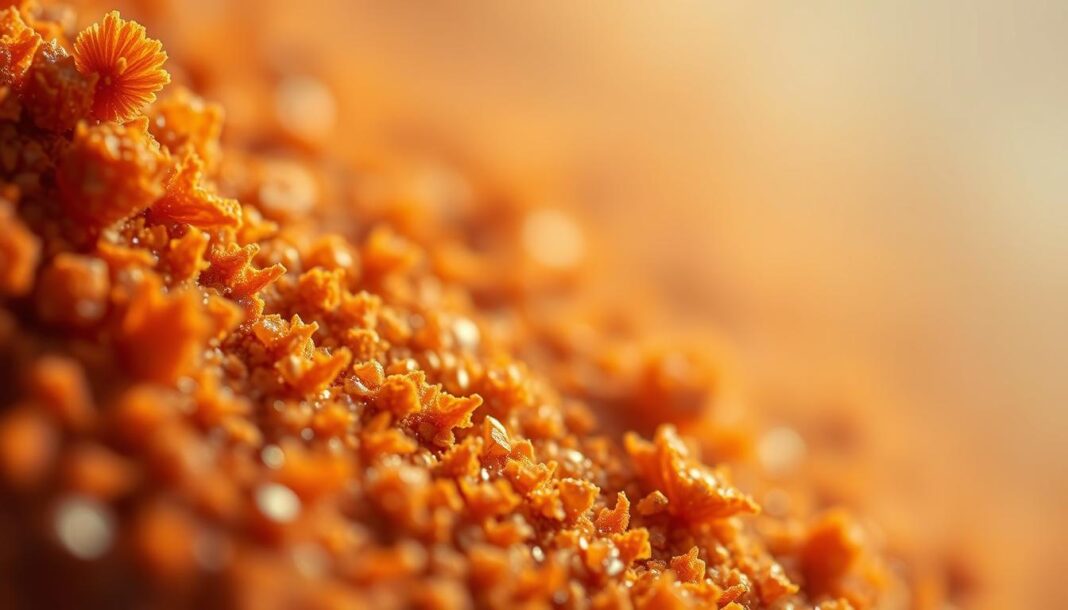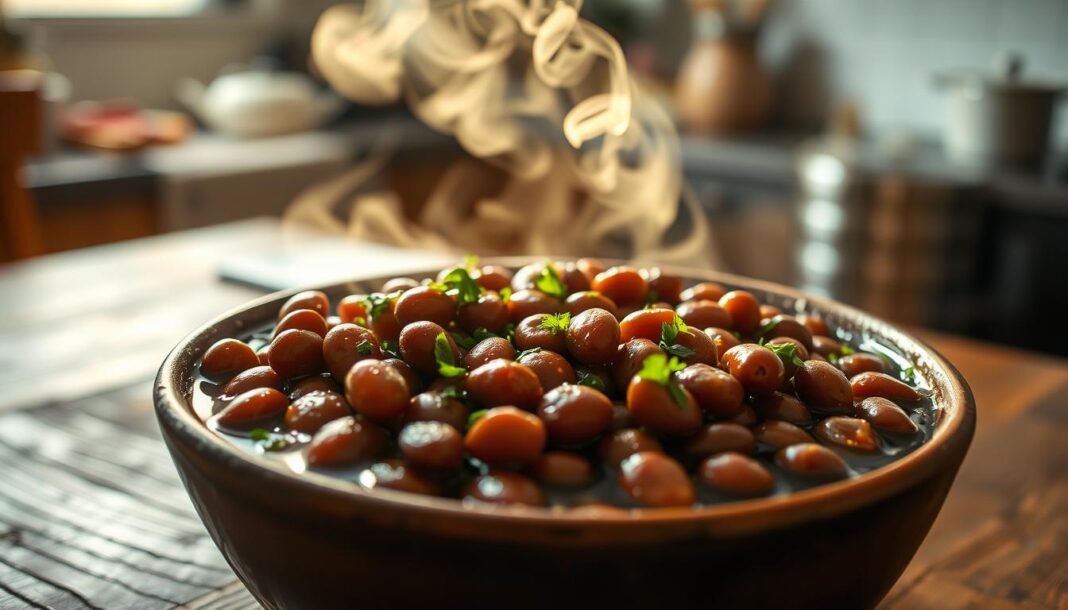We dive into the enchanting world of A Court of Thorns and Roses, a fantasy romance series by American author Sarah J. Maas. This captivating series follows the journey of 19-year-old Feyre Archeron as she is brought into the faerie lands of Prythian. With over 13 million copies sold and being a New York Times Best Seller, the series has made a significant impact on the fantasy genre.
The series draws heavily from traditional folklore and fairy tales, crafting a unique faerie world that has captivated millions of readers worldwide. As we explore the intricate mythology and world-building elements of this series, we will examine how Maas transformed ancient myths into a modern fantasy narrative.
Key Takeaways
- The series is a fantasy romance that follows Feyre’s adventures in Prythian.
- Sarah J. Maas drew from traditional folklore to create the faerie world.
- The series has achieved phenomenal success with over 13 million copies sold.
- The world-building elements include complex magical systems and hierarchies.
- The narrative resonates with contemporary audiences through its modern take on ancient myths.
The World of Faerie Acotar: An Overview
The ‘A Court of Thorns and Roses’ series by Sarah J. Maas is a masterclass in world-building, drawing readers into the enchanting realm of Prythian. This series has captivated audiences worldwide with its intricate storytelling and detailed mythology.
Sarah J. Maas’s ACOTAR Series
Sarah J. Maas’s ‘A Court of Thorns and Roses’ series is a five-book narrative that began with ‘A Court of Thorns and Roses’ in 2015 and concluded with ‘A Court of Silver Flames’ in 2021. Initially conceived as a retelling of classic fairy tales like ‘Beauty and the Beast’ and ‘Tam Lin,’ the series evolved into a unique blend of faerie lore and original storytelling. The series includes:
- A Court of Thorns and Roses (2015)
- A Court of Mist and Fury (2016)
- A Court of Wings and Ruin (2017)
- A Court of Frost and Starlight (2018)
- A Court of Silver Flames (2021)
Maas started writing the first book in early 2009, completing the initial draft in about five weeks. However, the series underwent significant development before its publication, reflecting Maas’s dedication to crafting a compelling narrative.
Prythian: The Faerie Realm
Prythian, the faerie realm in which the series is set, is a vast and diverse world, comprising various lands and territories. The geography of Prythian is complex, with different regions governed by distinct faerie courts. The relationship between Prythian and the mortal lands is also a significant aspect of the series, with a delicate balance of power and interaction.

The world of Prythian is rich in lore and history, providing a detailed backdrop for the series’ narrative. Through Maas’s world-building, readers are immersed in a realm of magic, politics, and adventure, making ‘A Court of Thorns and Roses’ a captivating read.
Origins and Mythological Inspirations
Delving into the origins of Faerie Acotar, it becomes evident that Maas’s work is influenced by a myriad of mythological sources, including the haunting tale of Tam Lin. The ACOTAR series, known for its intricate world-building and complex characters, draws heavily from various folklores and mythologies, making it a rich subject for analysis.
The Ballad of Tam Lin
The Ballad of Tam Lin, a Scottish ballad dating back to the 16th century, is a significant inspiration for Maas’s work. This ancient tale tells the story of a mortal woman who rescues her fairy lover, Tam Lin, from the clutches of the faerie queen. The narrative explores themes of love, courage, and the perilous interactions between mortals and the faerie realm. Maas’s character, Tamlin, is a clear nod to this ballad, reflecting the enduring influence of traditional folklore on her storytelling.
Celtic Folklore Influences
Celtic folklore is another crucial element in the world-building of ACOTAR. The concept of the Otherworld, a realm that exists alongside the mortal world, is deeply rooted in Celtic mythology. The faeries in these stories are not depicted as benign creatures but as powerful, often malevolent beings that command respect and fear. Maas maintains this portrayal in her series, emphasizing the dangers and mysteries associated with the faerie world.
Other Fairy Tales and Myths
In addition to The Ballad of Tam Lin and Celtic folklore, Maas’s work is influenced by other fairy tales and myths. Stories like Beauty and the Beast and the Greek myth of Hades and Persephone have contributed to the rich tapestry of ACOTAR, particularly in the development of the second book in the series. These influences add depth and complexity to the narrative, making it more engaging for readers.
| Mythological Influence | Element in ACOTAR | Significance |
|---|---|---|
| The Ballad of Tam Lin | Character of Tamlin | Reflects themes of love and courage |
| Celtic Folklore | The Otherworld concept | Adds depth to the faerie realm |
| Beauty and the Beast | Relationship dynamics | Influences character interactions and development |

The High Fae of Prythian
Prythian’s High Fae are characterized by their human-like appearance with distinct features such as delicately-arched ears and longer limbs, coupled with remarkable abilities. They are known for their otherworldly beauty, which can be both captivating and intimidating. The High Fae are the ruling class in Prythian, serving as the nobility amidst various lesser faerie species.

Physical Characteristics and Abilities
The High Fae possess a range of physical and magical attributes. They have enhanced strength, speed, and agility, alongside basic magic that allows them to perform various feats. Some High Fae exhibit unique abilities, such as the Daemati, who can enter and manipulate minds, and Seers, who possess the gift of prophetic vision. Most High Fae can also glamour humans and winnow across vast distances, making them formidable beings within Prythian.
Social Hierarchy and Culture
The social structure of Prythian is dominated by the High Fae, who are served by lesser faerie species. Historically, humans were enslaved by the High Fae, though there were faeries who fought alongside humans for their freedom. The High Fae’s culture is rich with traditions and practices that reflect their nobility and power. Their court systems and social hierarchies play a significant role in shaping the politics and conflicts within the realm, influencing the lives of both faeries and humans.
The Seven Courts of Prythian
In the realm of Prythian, the faerie world is divided into seven distinct courts, each with its unique culture and magical attributes. These courts are broadly categorized into Seasonal Courts and Solar Courts, reflecting different aspects of nature and the faerie world.
Characteristics of the Seasonal Courts
The Seasonal Courts—Spring, Summer, Autumn, and Winter—are characterized by their respective seasonal attributes and the powers associated with them. For instance, the Spring Court, one of the primary settings in the first book of the ACOTAR series, is known for its perpetual springtime climate and lush landscapes. It is ruled by High Lord Tamlin, whose court serves as a significant location in the narrative. The Spring Court’s environment and the powers of its High Lord are deeply intertwined, reflecting the renewal and growth associated with spring.
Each Seasonal Court has its unique charm and challenges. The Summer Court is depicted as a tropical paradise, with its High Lord capable of controlling water, showcasing the court’s association with abundance and vitality. In contrast, the Autumn Court is characterized by its fiery landscapes, with its High Lord wielding the power of fire, symbolizing change and harvest. The Winter Court, with its snow-covered expanses, represents a season of rest and contemplation, with its High Lord having dominion over ice and snow.
- The Spring Court is associated with renewal and growth.
- The Summer Court is known for its abundance and vitality.
- The Autumn Court symbolizes change and harvest.
- The Winter Court represents rest and contemplation.
Exploring the Solar Courts
The Solar Courts—Dawn, Day, and Night—are equally fascinating, with their distinct cultures and powers. The Night Court, in particular, becomes a central setting in the series, known for its mysterious and powerful nature. It is divided into the Court of Nightmares and the Court of Dreams, reflecting the duality of night. The Night Court’s complexity and the charisma of its High Lord make it a compelling aspect of the faerie world.
The Solar Courts are ruled by High Lords with unique abilities related to their respective courts. For example, the High Lord of the Night Court has powers associated with the night, adding to the court’s mystique and influence within Prythian. The political dynamics between the Solar Courts and the Seasonal Courts are intricate, with alliances and conflicts shaping the broader politics of Prythian.
For a deeper understanding of the ACOTAR series and its intricate world-building, you can explore more on the ACOTAR series analysis.
Magic Systems and Faerie Acotar Powers
The magic system in the ACOTAR series is complex and multifaceted, reflecting the richness of Prythian’s faerie world. We will delve into the various aspects of faerie magic, exploring how it shapes their society and interactions.
Winnowing and Basic Faerie Magic
Winnowing is a fundamental ability among the High Fae, allowing them to teleport across vast distances instantly. This power, combined with their ability to glamour humans and other faeries, makes them formidable beings. Basic faerie magic also includes enhanced physical capabilities and extended lifespans, contributing to their superior status in Prythian.
Court-Specific Powers
Each of the seven courts in Prythian has its unique magical abilities, often reflecting the nature of the court. For instance, the Summer Court’s High Lord can control water, while the Autumn Court’s High Lord can manipulate fire. These court-specific powers not only define the characteristics of each court but also play a significant role in the politics and conflicts within Prythian.
| Court | Magical Ability |
|---|---|
| Summer Court | Water Manipulation |
| Autumn Court | Fire Control |
| Night Court | Darkness/Mind Powers |
The High Lords and Their Abilities
The High Lords of Prythian possess the most concentrated magic of their respective courts. Their abilities are not only more powerful but also more specialized, making them key players in the faerie world. The transfer of these powers, as seen when Feyre receives a portion of each High Lord’s power, creates unprecedented magical potential and significantly impacts the balance of power in Prythian.
Human-Faerie Relations in ACOTAR
Human-faerie relations in ACOTAR are defined by a tumultuous past, ongoing prejudices, and the quest for peace and understanding. The history between humans and faeries is complex, marked by periods of enslavement, war, and eventual separation.
The Treaty and The Wall
A pivotal moment in this history was the signing of a treaty that ended the war between humans and faeries. This treaty led to the construction of The Wall, a physical barrier separating the mortal lands from the faerie kingdoms of Prythian. The Wall serves not only as a physical divider but also as a symbolic representation of the deep-seated divisions between the two worlds.
| Aspect | Pre-Treaty Era | Post-Treaty Era |
|---|---|---|
| Human-Faerie Relations | Humans enslaved by High Fae; some faeries fought alongside humans for freedom. | Separation; The Wall constructed to divide mortal lands from Prythian. |
| Conflict | Ongoing war between humans and faeries. | Relative peace, but with underlying tensions. |
Prejudices and Misconceptions
Despite the treaty, strong resentments and prejudices persist on both sides. Humans often view High Fae as dangerous and cruel, while faeries consider humans inferior. The human fanatical group, the Children of the Blessed, worships High Fae as gods, representing a stark contrast to the prevalent fear and hatred towards faeries.
The complex dynamics between humans and faeries in ACOTAR highlight the challenges of overcoming historical grievances and cultural differences. As the series progresses, the narrative explores the way towards understanding and peace between these disparate peoples.
Character Evolution Through World-Building
Sarah J. Maas’s ACOTAR series is renowned for its intricate world-building, which plays a pivotal role in shaping the characters’ journeys. The richly detailed realm of Prythian and its complex societal structures provide a fertile ground for character development.
Feyre’s Journey from Human to High Fae
Feyre Archeron’s transformation from a human huntress to a High Fae is a compelling narrative arc in the series. Initially, Feyre is brought into the faerie realm as a result of her encounter with a beastly figure while hunting. As she navigates the world of Prythian, she undergoes significant physical and psychological changes, ultimately becoming High Lady of the Night Court. This transformation is not just physical but also emotional, as she learns to harness her newfound powers and navigate the complexities of faerie politics.
At the end of A Court of Thorns and Roses, Feyre becomes High Fae after receiving a drop of magic from each of the seven High Lords, which brings her back to life. This unique magical infusion makes her an unprecedented figure in Prythian, influencing her role in the unfolding conflicts and her relationships with other characters.
Other Character Transformations
The transformation is not limited to Feyre; her sisters, Nesta and Elain, also undergo significant changes. At the end of A Court of Mist and Fury, both sisters are turned into High Fae, forcing them to adapt to their new supernatural existence. Nesta, in particular, struggles with her new identity, grappling with the implications of her enhanced abilities and her place within the faerie world.
These character transformations serve as more than just plot devices; they are vehicles for exploring deeper themes such as identity, adaptation, and what it means to be human or faerie. Through these transformations, Maas examines the complexities of change and the resilience required to navigate new realities.
The Cultural Impact of ACOTAR’s Faerie World
The cultural impact of ACOTAR’s faerie world is multifaceted and profound, reflecting the series’ significant influence on contemporary fantasy literature. The A Court of Thorns and Roses series has not only achieved immense commercial success but has also fostered a devoted fanbase.
With over 13 million copies sold and a consistent presence on bestseller lists, the series has demonstrated its enduring appeal. The fifth book, A Court of Silver Flames, reached the number one spot on the fiction bestseller list, underscoring the series’ lasting impact. The ACOTAR books have been nominated for eight Goodreads Choice Awards, winning three, and have been featured on numerous “best of” lists for fantasy and young adult fiction.
The passionate online fandom, particularly on platforms like TikTok, has generated billions of views, creating a vibrant community of readers. The series has also influenced other fantasy authors, contributing to a broader trend of fairy-inspired fantasy fiction with strong female protagonists and romantic elements.
As the series is adapted into a television show, its cultural relevance is likely to continue. The planned television adaptation will introduce the faerie world to new audiences, potentially expanding its impact. We examine how the ACOTAR series has helped define and popularize the “romantasy” genre, blending elements of romance and fantasy.


